Oaks - introduced (Quercus species)
In the Flora of Victoria vol 3 p 89, 1996, it reads "While acorns of a number of Qurecus species germinate readily near cultivated trees, none of these species are regarded as naturalised in the State". Scattered oaks are found in the distrct, and it is not easy to decide whether or not thay are planted or self-sown. A variety of oaks were planted in Picnic Gully on the west side of Mt Alexander. There are many seedlings, presumably waiting for space to grow to maturity. There are also self-sown oaks in the railway reserve, beside Kennedy St.
Acorns. The base of an acorn is covered by a cup. The scales on the cup can be pressed against the cup, or be separate, and curved back (the mossy-cup oaks).
This page relates to some of the oaks in the plantation.
English Oak (Quercus robur)
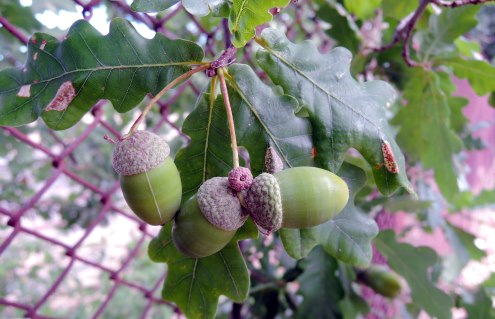
Also called the Pedunculate Oak because of the long-stalked acorns. The leaves are very shortly stalked. Probably the most common oak in the district.
Native of Europe.
Recognise by the long-stalked acorns.
English Oak timber was favoured for ship building and for house construction, particularly for roof beams.
Durmast Oak (Quercus petraea)
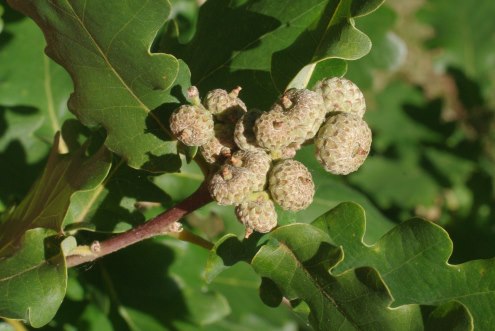
It is also called the Sessile Oak. It is similar to the English Oak, but the acorns are almost stalkless. The leaves also have longer stalks than do those of the English Oak.
Native to Europe.
petraea: it grows in rocky places
Cork Oak (Quercus suber)
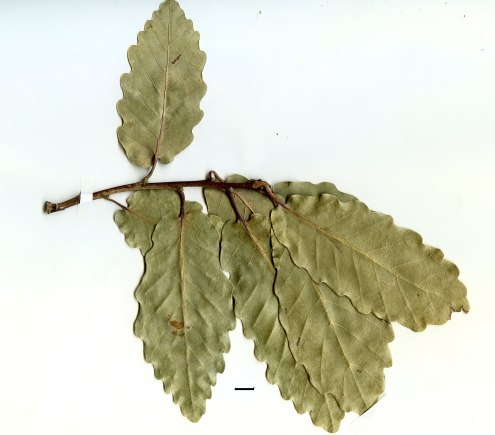
Native to the western Mediterranean region.
Cork Oak has thick corky bark. The bark is may be periodically harvested to make corks. The leaves are less indented than some other oaks.
Recognise by the distinctive bark.
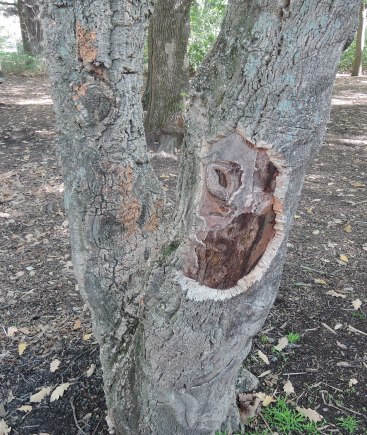
Valona Oak (Quercus macrolepis)
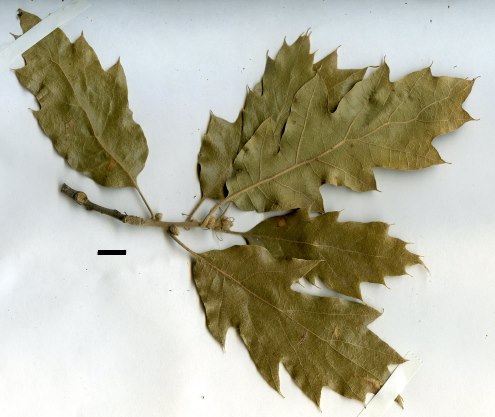
Valona Oak is a mossycup oak. The leaves are toothed rather than lobed.
Native to south-eastern Mediterranean region.
Chestnut Oak (Quercus castaneifolia)
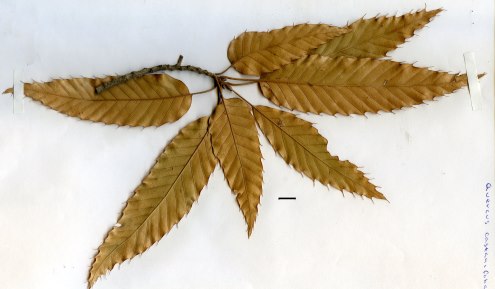
Native to south and south-west of the Caspian Sea.
This is another mossycup oak. The leaves are rather finely toothed
Much of the above information has been obtained from early issues of "Whirrakee", the monthly newsletter of the Bendigo Field Naturalists Club. A billboard at the oak forests, from the Harcourt Valley Heritage and Toursit Centre lists the
"Exotic tree species.
English Oak (quercus robur)
Bristle-tipped Oak (quercus acutissima)
Algerian Oak (quercus canariensis)
Cork Oak (quercus suber)
Atlas Cedar (cedrus atlantica)
Monterey Pine (pinus radiata)
'Common' or 'European' Ash (fraxinus excelsior)".
There is clearly some divergence in the this list and earlier lists.